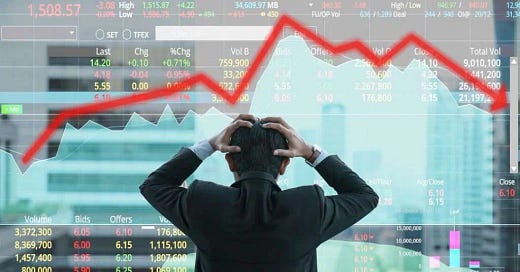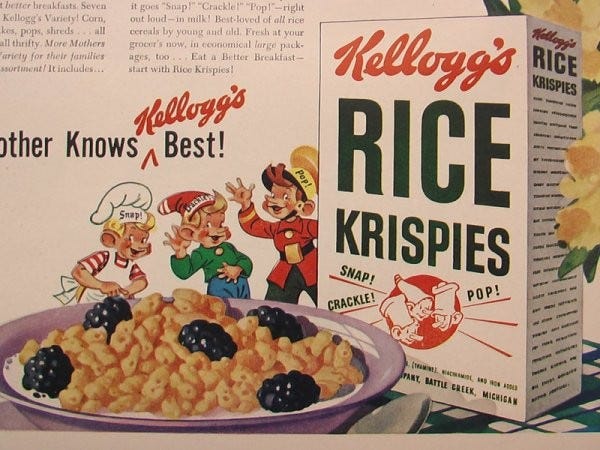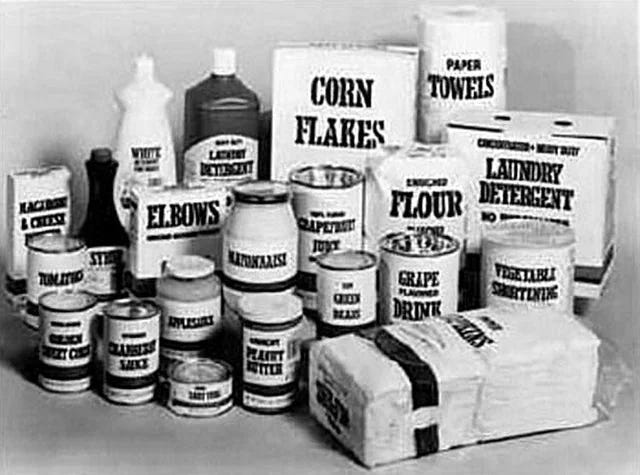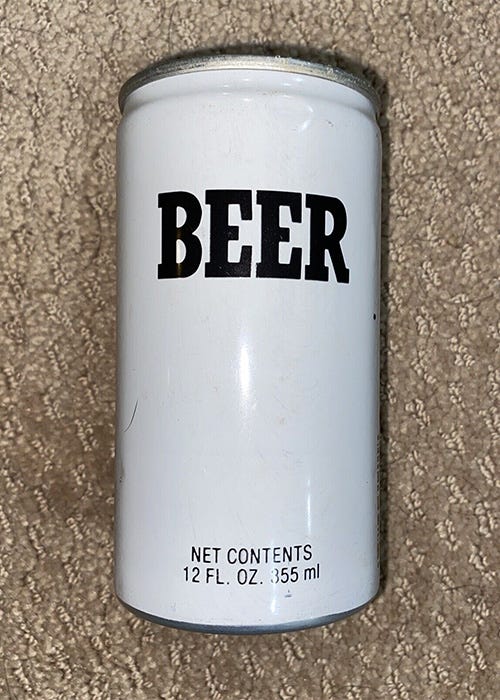When the economy hits the fan, marketers don’t just panic—they pivot. Recessions are the great pressure cookers of the business world, squeezing out nonsense and boiling marketing down to what really works. The result? Campaigns that are scrappy, desperate, wildly inventive—and sometimes just plain weird.
From the economic freefall of the 1800s to the memeified madness of COVID-19, and all the way to Trump’s 2025 tariff tantrum, here’s how five eras of crisis reshaped how we sell.
The 1800s: Panic, Tokens, and the Birth of Recession Marketing
The 19th century wasn’t all top hats and monocles. It was also full of economic chaos. During the Panic of 1837—a spectacular financial implosion triggered by banking collapses and trade shocks—U.S. businesses found themselves without currency and with customers hoarding coins. Their solution? Make your own money.
Enter the Hard Times Tokens. Over 140 businesses minted their own copper tokens stamped with shop names, slogans, and logos. These little coins kept commerce flowing and doubled as ads every time they changed hands. Imagine handing out Starbucks gift cards during a cash crisis, only each one says, “Latte me up, even when the economy’s down.” Genius.
Later in the 1870s, during what’s known as the Long Depression, American department stores found creative ways to keep customers coming. Retail pioneers like John Wanamaker didn’t race to the bottom—instead, they built trust. Wanamaker introduced one of the first money-back guarantees and emphasised transparent pricing in his ads, a radical shift at a time when haggling was the norm.
In a gloomy economy, it was a genius move: signal value, remove friction, and make shoppers feel safe. Recession marketing wasn’t about flashy gimmicks—it was about reliability, reform, and reputation.
The Great Depression: Soap, Cereal, and a Whole Lotta Emotion
In the 1930s, ad spending dropped nearly 40%—but while most brands tightened their belts, some saw opportunity.
Kellogg’s made perhaps the boldest play of the era. While rival Post went silent, Kellogg’s doubled its ad spend and promoted Rice Krispies with a trio of talking elves. That gamble paid off with a 30% bump in profits, and they’ve been the breakfast king ever since.
Meanwhile, Procter & Gamble pioneered the first true "content marketing"—they literally invented the soap opera to sell cleaning products. “Ma Perkins,” a radio drama about a kind-hearted widow, ran for over two decades. Viewers tuned in for the tears, stayed for the detergent.
Of course, some brands went off the rails. Fleischmann’s Yeast ran ads suggesting their product cured fatigue, acne, and—wait for it—crooked teeth. It was so absurd it helped inspire the FTC’s crackdown on false advertising. Apparently, yeast can’t fix your face.
The 1970s: Oil, Inflation, and the Era of Anti-Marketing
The stagflation-ridden 1970s weren’t exactly groovy for advertisers. Prices soared, unemployment followed, and consumers got stingy. Enter the Generic Era.
No Name brands took over shelves—literally. In 1977, Canadian grocery stores launched yellow-labeled, black-text packaging for everything from cornflakes to cola. America followed suit. One infamous U.S. beer just slapped “BEER” on a white can. That’s it. No logo. No slogan. Just existential truth in a can.
Shrinkflation also kicked in. Candy bars got smaller. Toilet paper rolls quietly lost a few squares. The product didn’t change, it just… disappeared slightly.
Over in the auto world, Japanese automakers capitalised on America’s gas guzzling hangover. While Detroit floundered, Toyota cranked out fuel-efficient Corollas and ramped up ad spend, stealing market share like a Prius in a drag race.
By 1976, Toyota overtook VW as the top import in the U.S. Lesson? Efficiency sells when your wallet’s empty.
2020: COVID-19, Couch Potatriots, and Empathy Overdrive
The COVID recession brought everything to a standstill—except brand pivots. As fear spread faster than the virus, companies scrambled to replace sales pitches with solidarity. Out went promos. In came piano music, solemn voiceovers, and hashtags like #InThisTogether. Marketing suddenly had a conscience.
Burger King leaned into absurdity with its upside-down campaign: “Stay Home of the Whopper.” Customers were praised as “couch potatriots” and rewarded with free delivery. It was weird, it was bold, it worked.
Coca-Cola went the opposite route—quiet, emotional, product-free. Their film Unsung Heroes followed a NYC delivery man, shining a spotlight on essential workers. No Coke bottle. Just hope in motion.
Uber pulled the ultimate pivot: Thank you for not riding with us. A campaign that did the unthinkable—asked people not to use the service—and somehow came out stronger for it.
Then there was Nike, doing what Nike does best: “If you ever dreamed of playing for millions, now’s your chance: play inside. Play for the world.” It was timely, on-brand, and viral within hours.
Meanwhile, everything else went digital. With IRL on pause, brands flooded livestreams, TikTok, and influencer collabs. Marketing got agile, empathetic, and sometimes nauseatingly sincere—but it kept the lights on.
2025: Trump’s Tariff Tantrum and the Rise of the Surly Surcharge
Fast-forward to today. Trump’s back, tariffs are flying, and marketers are once again scrambling. From toys to tech, imported goods are up to 25% more expensive. That means higher prices—and some very creative explanations.
Lionel Racing, a NASCAR toy company, just tacked on a 10% "tariff surcharge" to every product and emailed customers to explain why. Because nothing says “childhood joy” like a crash-course in macroeconomics.
Other brands are plastering “Made in USA” across their packaging, leaning into economic patriotism. “Higher prices? That’s the sound of freedom, baby.”
Retailers like Target and Best Buy have started posting notices about tariff-related price adjustments. It’s honest, if a bit bleak. And it beats getting roasted online for sneaky hikes.
Some companies are quietly shrinking products or tweaking designs to dodge tariffed materials. Others are eating the cost to keep prices steady and avoid freaking out consumers.
And then there’s the PR high-wire act. Brands are explaining price hikes without alienating pro-tariff customers. Walk too far in either direction and you’re either “greedy” or “unpatriotic.” It’s like threading a marketing needle with oven mitts on.
Ad budgets, meanwhile, are under fire again. A 2025 industry survey found nearly half of U.S. advertisers plan to reduce spending thanks to trade chaos. So marketers are back to basics: tight targeting, digital-first, and messaging that emphasises value, resilience, or “we’re all doing our best here.”
Final Thoughts: When Things Break, Brands Build
Recessions force brands to confront uncomfortable truths. The flashy campaigns, the fat media buys, the gimmicks—they all get stripped away. What’s left is pure instinct: connect with customers, offer real value, and don’t be afraid to get weird.
From “Hard-Times Tokens” to couch potatriots, the best marketing during recessions shares one thing: agility. The brands that win are the ones that adapt fast, read the room, and say what people need to hear—whether that’s “stay home,” “we’ve got your back,” or just “yes, it’s beer.”
So, if you're staring down a shrinking budget or a sudden PR firestorm, take heart. History shows this isn’t the end—it’s the start of your next great marketing story.














